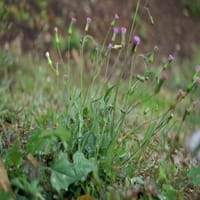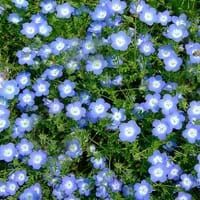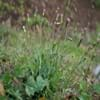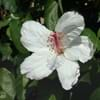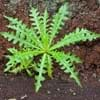Type
Flowering Plants
Flowering Plants, Herbs
Origin
Eastern Africa, Middle Africa, Southern Asia
Western United States, Alaska, California
Types
Not Available
Nemophila menziesii var. atomaria, Nemophila menziesii var. integrifolia, Nemophila menziesii var. menziesii
Habitat
Cultivated Beds
Chaparral, Grassland
USDA Hardiness Zone
8-11
3-9
AHS Heat Zone
8 - 1
Not Available
Sunset Zone
Not Available
A1, A2, A3, H1, H2, 1a, 1b, 2a, 2b, 3a, 3b, 4, 5, 6, 7, 8, 9, 10, 11, 12, 13, 14, 15, 16, 17, 18, 19, 20, 21, 22, 23, 24
Habit
Upright/Erect
Cushion/Mound-forming
Flower Color
Pink, Lavender, Violet
White, Blue, Light Blue, Sky Blue
Flower Color Modifier
Bicolor
Bicolor
Fruit Color
White, Brown
Not Available
Leaf Color in Spring
Green, Dark Green
Green
Leaf Color in Summer
Dark Green
Green
Leaf Color in Fall
Dark Green
Not Available
Leaf Color in Winter
Light Green
Light Green
Leaf Shape
Lyrate-pinnatilobed
Lobed
Plant Season
Summer
Spring, Summer, Winter
Sunlight
Full Sun, Partial Sun
Full Sun, Partial Sun
Growth Rate
Fast
Very Fast
Type of Soil
Clay, Loam
Loam, Sand
The pH of Soil
Acidic, Neutral, Alkaline
Acidic, Neutral
Soil Drainage
Well drained
Well drained
Bloom Time
Early Summer, Summer, Late Summer
Early Spring, Spring, Late Spring, Winter, Late Winter
Tolerances
Drought
Drought
Where to Plant?
Container, Ground, Pot
Ground
How to Plant?
Seedlings
Seedlings
Plant Maintenance
Medium
Medium
Watering Requirements
Average Water Needs
Do not water frequently, Never Over-water
In Summer
Lots of watering
Lots of watering
In Spring
Moderate
Moderate
In Winter
Average Water
Average Water
Soil pH
Acidic, Alkaline, Neutral
Acidic, Neutral
Soil Type
Clay, Loamy, Sandy
Loam, Sand
Soil Drainage Capacity
Well drained
Well drained
Sun Exposure
Full Sun, Partial Sun
Full Sun, Partial Sun
Pruning
Remove damaged leaves, Remove dead branches, Remove dead leaves
Not Available
Fertilizers
Self-fertile
All-Purpose Liquid Fertilizer
Pests and Diseases
Ascochyta blight, Bacterial Blight, Powdery mildew
Red blotch
Plant Tolerance
Drought
Drought
Flower Petal Number
Single
Single
Foliage Texture
Coarse
Fine
Foliage Sheen
Matte
Not Available
Attracts
Butterflies
Bees, Butterflies
Allergy
no allergic reactions
Not Available
Aesthetic Uses
Showy Purposes
Beautification, Bouquets, Showy Purposes
Beauty Benefits
Not Available
Not Available
Environmental Uses
Air purification
Air purification
Medicinal Uses
Astringent, Depurative, Diaphoretic, Diuretic, Expectorant, Febrifuge, Odontalgic, Ophthalmic
Pain killer
Part of Plant Used
Flowers, Leaves, Shoots
Flowers
Other Uses
Used as a vegetable
Not Available
Used As Indoor Plant
No
No
Used As Outdoor Plant
Yes
Yes
Garden Design
Mixed Border
Bedding Plant, Container, Hanging Basket, Mixed Border, Wildflower
Botanical Name
EMILIA sonchifolia
NEMOPHILA menziesii
Common Name
Consumption Weed, Lilac Tasselflower, Shaving Brush
Baby Blue Eyes
In Hindi
Shaving Brush
Baby Blue Eyes Plant
In German
Rasierpinsel
Baby Blue Eyes Pflanzen
In French
Blaireau
bébé yeux bleus usine
In Spanish
Brocha de afeitar
bebé ojos azules planta
In Greek
Βούρτσα ξυρίσματος
μωρό μπλε μάτια των φυτών
In Portuguese
Pincel de barba
bebê olhos azuis planta
In Polish
Pędzel do golenia
dziecko niebieskie oczy roślin
In Latin
Tondenti Peniculus
baby blue eyes plant
Phylum
Magnoliophyta
Not Available
Class
Magnoliopsida
Magnoliopsida
Order
Asterales
Not Available
Family
Asteraceae
Boraginaceae
Clade
Angiosperms, Asterids, Eudicots
Angiosperms, Asterids, Eudicots
Tribe
Senecioneae
Not Available
Subfamily
Asteroideae
Hydrophylloideae
Number of Species
Not Available
Importance of Shaving Brush and Baby Blue Eyes Plant
Want to have the most appropriate plant for your garden? You might want to know the importance of Shaving Brush and Baby Blue Eyes Plant. Basically, these two plants vary in many aspects. Compare Shaving Brush and Baby Blue Eyes Plant as they differ in many characteristics such as their life, care, benefits, facts, etc. Every gardener must at least have the slightest clue about the plants he wants to plant in his garden. Compare their benefits, which differ in many ways like facts and uses. The medicinal use of Shaving Brush is Astringent, Depurative, Diaphoretic, Diuretic, Expectorant, Febrifuge, Odontalgic and Ophthalmic whereas of Baby Blue Eyes Plant is Pain killer. Shaving Brush has beauty benefits as follows: Not Available while Baby Blue Eyes Plant has beauty benefits as follows: Not Available.
Compare Facts of Shaving Brush vs Baby Blue Eyes Plant
How to choose the best garden plant for your garden depending upon its facts? Here garden plant comparison will help you to solve this query. Compare the facts of Shaving Brush vs Baby Blue Eyes Plant and know which one to choose. As garden plants have benefits and other uses, allergy is also a major drawback of plants for some people. Allergic reactions of Shaving Brush are no allergic reactions whereas of Baby Blue Eyes Plant have Not Available respectively. Having a fruit bearing plant in your garden can be a plus point of your garden. Shaving Brush has showy fruits and Baby Blue Eyes Plant has no showy fruits. Also Shaving Brush is not flowering and Baby Blue Eyes Plant is not flowering . You can compare Shaving Brush and Baby Blue Eyes Plant facts and facts of other plants too.
